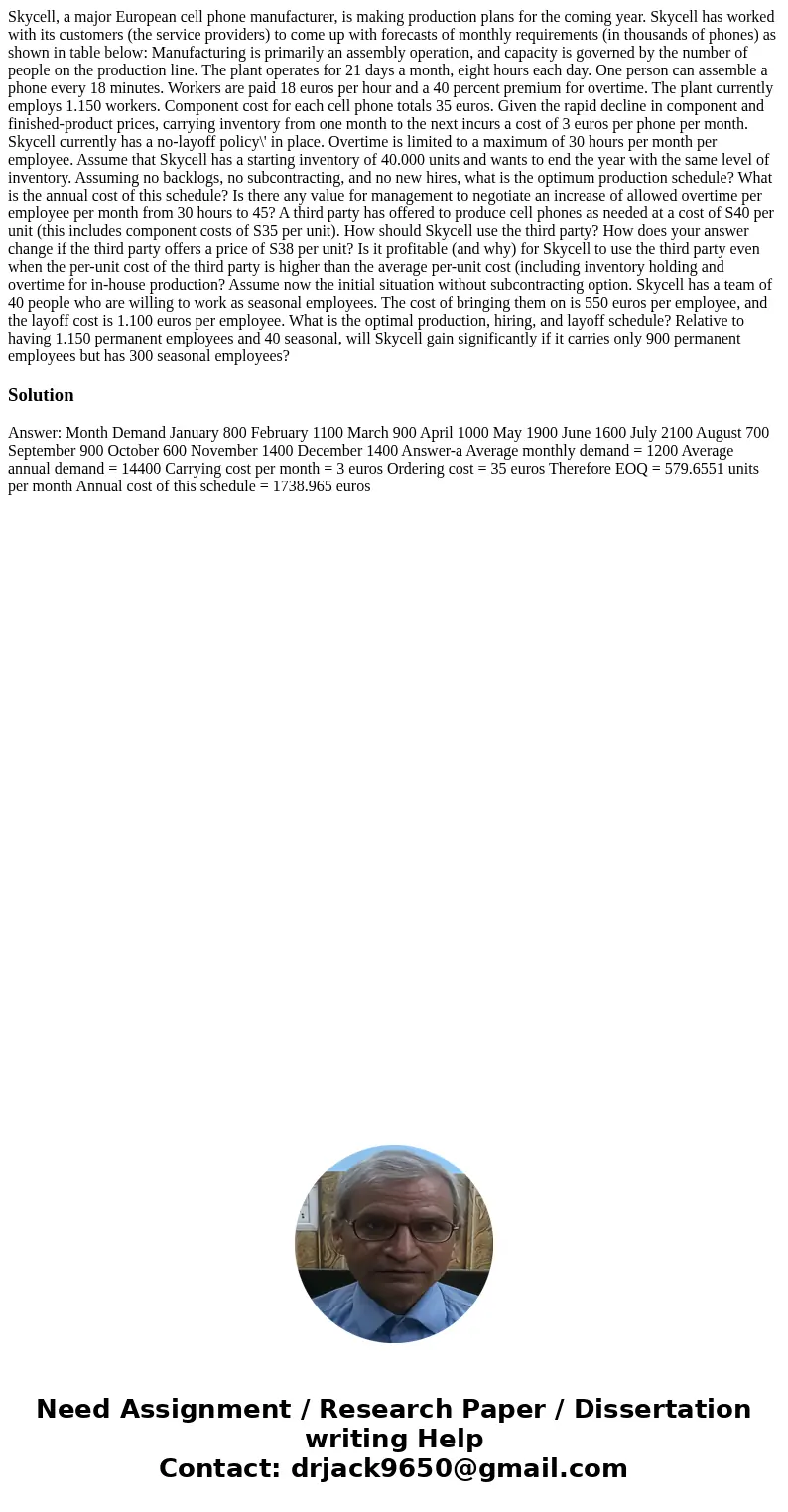Skycell a major European cell phone manufacturer is making p
Skycell, a major European cell phone manufacturer, is making production plans for the coming year. Skycell has worked with its customers (the service providers) to come up with forecasts of monthly requirements (in thousands of phones) as shown in table below: Manufacturing is primarily an assembly operation, and capacity is governed by the number of people on the production line. The plant operates for 21 days a month, eight hours each day. One person can assemble a phone every 18 minutes. Workers are paid 18 euros per hour and a 40 percent premium for overtime. The plant currently employs 1.150 workers. Component cost for each cell phone totals 35 euros. Given the rapid decline in component and finished-product prices, carrying inventory from one month to the next incurs a cost of 3 euros per phone per month. Skycell currently has a no-layoff policy\' in place. Overtime is limited to a maximum of 30 hours per month per employee. Assume that Skycell has a starting inventory of 40.000 units and wants to end the year with the same level of inventory. Assuming no backlogs, no subcontracting, and no new hires, what is the optimum production schedule? What is the annual cost of this schedule? Is there any value for management to negotiate an increase of allowed overtime per employee per month from 30 hours to 45? A third party has offered to produce cell phones as needed at a cost of S40 per unit (this includes component costs of S35 per unit). How should Skycell use the third party? How does your answer change if the third party offers a price of S38 per unit? Is it profitable (and why) for Skycell to use the third party even when the per-unit cost of the third party is higher than the average per-unit cost (including inventory holding and overtime for in-house production? Assume now the initial situation without subcontracting option. Skycell has a team of 40 people who are willing to work as seasonal employees. The cost of bringing them on is 550 euros per employee, and the layoff cost is 1.100 euros per employee. What is the optimal production, hiring, and layoff schedule? Relative to having 1.150 permanent employees and 40 seasonal, will Skycell gain significantly if it carries only 900 permanent employees but has 300 seasonal employees?
Solution
Answer: Month Demand January 800 February 1100 March 900 April 1000 May 1900 June 1600 July 2100 August 700 September 900 October 600 November 1400 December 1400 Answer-a Average monthly demand = 1200 Average annual demand = 14400 Carrying cost per month = 3 euros Ordering cost = 35 euros Therefore EOQ = 579.6551 units per month Annual cost of this schedule = 1738.965 euros
 Homework Sourse
Homework Sourse